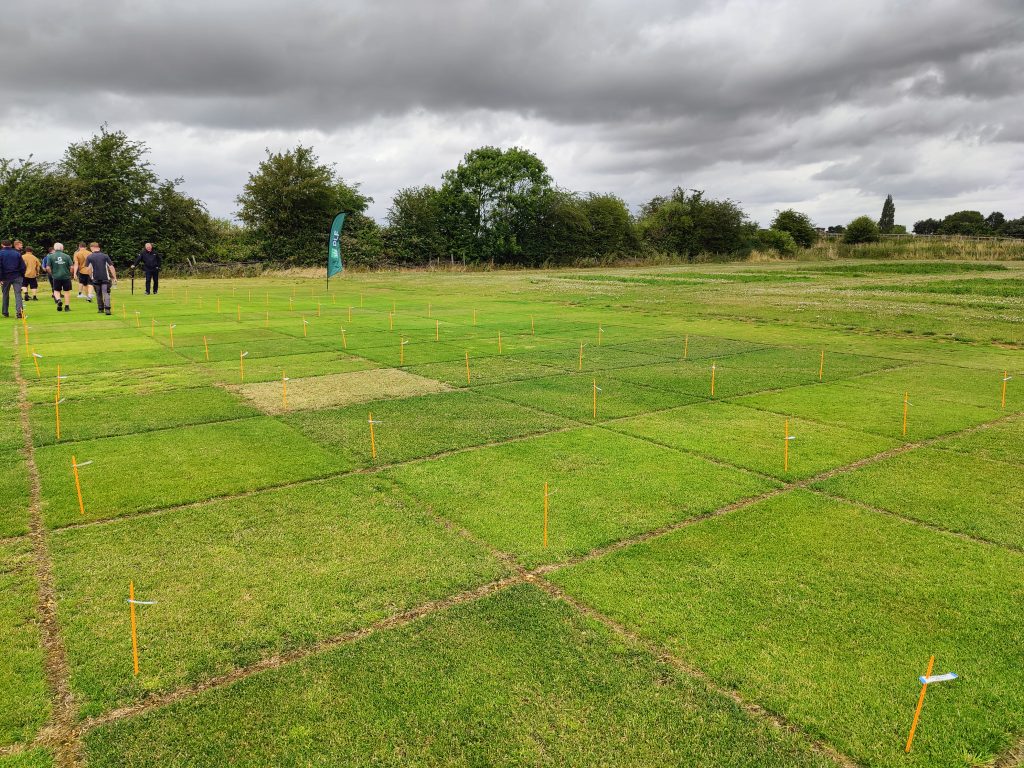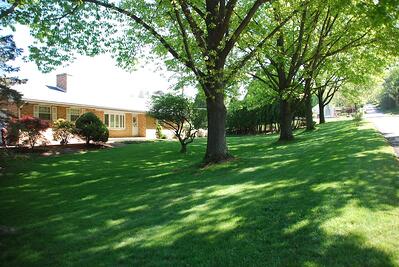
grass trial plots measure variety
Which lawn grass is best?
How is your lawn looking? If it’s not great, then understanding the reasons behind that is important to its improvement. Perhaps it could have more to do with the grass type than how the grass is cared for. Most people assume grass is just grass and give little thought to the different species of grasses, or indeed the varieties of grass within the species.
Why is lawn grass type important?
Different grass types have different characteristics. These influence the suitability of one grass over another in the setting for which it is being used. If you have ever been on a golf course and noticed how short the grass is cut on the greens and tees. This is far shorter than most grass in a domestic lawn should be cut. That’s because the grass of the golf green has been selected for its ability to tolerate short mowing. Grass on a football pitch is not mown as short but needs to recover quickly from destructive boots with studs. Maybe it seems obvious that different grass types need to be used in these two different examples. So why not in your lawn?
Choosing lawn grass types
Things have moved forward massively in seed breeding and improvement of lawn grass varieties. Suppliers run trials to develop grass with certain key attributes. Grass that is deeper rooted, drought or disease resistant, greener, quicker to germinate, more tolerant of acid or alkaline soils, harder wearing…the list goes on and on. The reason they invest in this is that there are many different applications for how amenity grass is used and the environment in which it is grown. The grass seed they supply needs to perform well in those environments. If you live on the Isle of Wight, you are likely to need different lawn grass varieties than if you live on the Isle of Man.
What grass seed should I use?
Understanding how you use your lawns, how you want them to look, and what environment you are growing them in, influences what species should be chosen for your specific requirements. Some people love to mow their lawn and are dedicated to the task, wanting neat lines and a short leaf. Bent grasses and fescues are suited to this. Others may want a hard-wearing lawn that children and the dog can tear around on. Dwarf rye grasses can work well in these environments but are less tolerant of short mowing and don’t reproduce to fill the gaps in the lawn – meaning you need to consider annual over-seeding. Maybe smooth stalk meadow grass would be better, or a creeping red fescue or brown top bent…the lost goes on.

selecting deeper rooted varieties

select the right seed blend for the growing environment
Should I over-seed my lawn?
How did your lawn come to exist? Maybe you inherited it when you moved to your home. Perhaps you had it laid from turf or sown from seeds bought without consideration of the points raised above. Is your lawn ideally suited to the growing conditions in your garden and how you want to use it? If not, it can be adjusted to provide you with a better-looking lawn that you can enjoy all year round? That is the beauty of over-seeding a lawn. You don’t have to make do with the grass plants that the turf grower found easiest or quickest to grow and sell. Or a lawn grown from cheaper seed by a housing developer. We can introduce new grasses that are better suited to you and your family.
Should I seed or turf my lawn?
Turfing is instant, like laying a carpet or buying a suit off the peg. Who is to say how well that turf is going to cope with the specific conditions in your garden. A bespoke suit is likely to fit you and your needs better. A bespoke lawn can be created exactly to fit you, your garden and how you want to use it. Lawns grown from seed always establish better than those grown from turf as the grass varieties in the chosen seed mix will be better suited to the growing conditions. This may all sound relatively complicated. If lawncare was easy, we wouldn’t be in business. The great news is that your existing lawn can be altered significantly with professional overseeding. If you think you deserve a better lawn then get in touch with a lawncare professional.

 Established 2016
Established 2016



